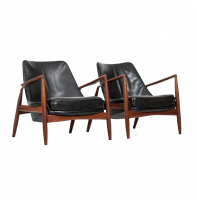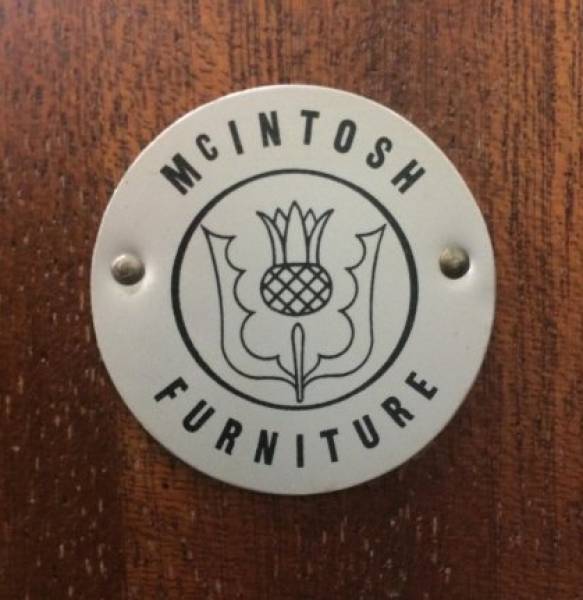McIntosh of Kirkcaldy in Scotland was one of the most prominent makers (along with G Plan of High Wycombe) of British contemporary dining furniture in the 1960s and 70s, producing fine examples of mid-century modern furniture using traditional making processes that employed highly skilled cabinet makers.
Founded in 1869 by Alexander Henry (A.H) McIntosh (1835-1919) in Kirkcaldy, within the Fife region of Scotland, the business expanded quickly thoughout the UK and internationally, exhibiting at the World Fair in Paris in 1878, and the Sydney Exhibition in 1879. Like many other business during the First World War, McIntosh contributed to the war effort by manufacturing airplane wings and other parts for the duration.
By the early 1960s, McIntosh began to move away from producing more traditional style dining and bedroom furniture towards making mid-century style furniture akin to the Danish Modern style. This move was lead by McIntosh design director Tom Robertson and Val Rossi, and lead the company into a period of prosperity. It was around this time that McIntosh stopped making bedroom furniture in order to focus production on its more popular dining room tables, chairs and sideboards, like the enduringly popular Dunvegan Sideboard.
By the late 1970s, tastes had changed and McIntosh’s popularity began to wane. By the early 2000’s the company had moved into the educational furniture industry; they continue to produce a wide range of school furniture under the name ESA McIntosh.
With the resurgence of interest in the mid-century modern style, many of McIntosh’s designs from the 1960s are once again highly sought after pieces of furniture.
All Restoration






 The Dunvegan Sideboard, designed by Tom Robertson (design director of McIntosh from 1948 until 1983), was first produced by McIntosh around the beginning of the 1960s. This sideboard, known for its sculpted handles, was one of the company’s most popular designs, and was manufactured for around 20 years.
The Dunvegan Sideboard, designed by Tom Robertson (design director of McIntosh from 1948 until 1983), was first produced by McIntosh around the beginning of the 1960s. This sideboard, known for its sculpted handles, was one of the company’s most popular designs, and was manufactured for around 20 years.